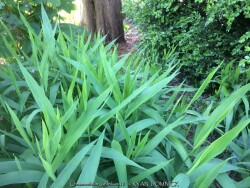
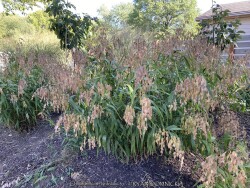


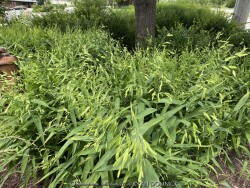




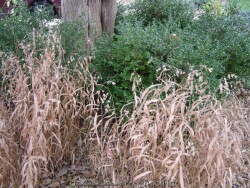
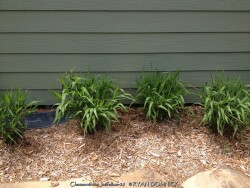
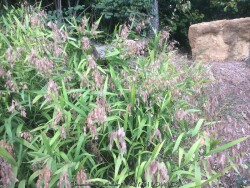
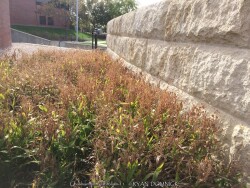
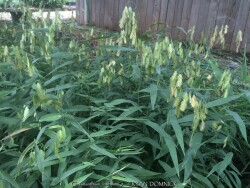


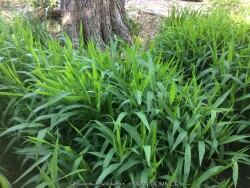
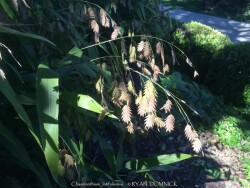
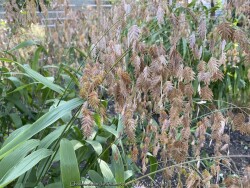
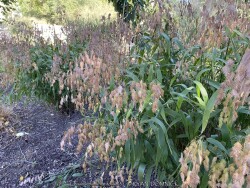
Plant Min Zone: 3a
Plant Max Zone: 8b
Sunlight: Part Sun, Shade
Water / Rainfall: Low, Average
Soil Quality: Poor, Average, Rich
Bloom Season: Late Summer, Fall
Flower Color: Brown-Beige
Berry / Fruit Color: Brown-Beige
Spring Foliage Color: Green
Summer Foliage Color: Green
Fall Foliage Color: Green
Evergreen Foliage: No
Winter Interest: Yes
Scented Flowers: No
Drought Tolerance: Medium, High
Wet-Feet Tolerance: Medium
Humidity Tolerance: Medium
Wind Tolerance: High
Poor Soil Tolerance: Sandy Soils, Rocky Soils, Clay Soils, Acidic Soil (low PH), Alkaline Soils (high PH)
Height: 2' - 3'
Width: 2' - 3'
Growth Rate: Medium
Service Life: Very Long: 10-20 years
Maintenance Need: Low
Spreading Potential: Medium
Yearly Trimming Tips: Trim Ornamental Grass to Ground in Early Spring before New Growth: Has Winter Interest.
Plant Grouping Size: Medium Grouping of 5-10, Mass Planting of 10 or more
Best Side of House: East Exposure, North Exposure
Extreme Planting Locations: Resistant to Rabbits, Top of Retaining Wall Locations
Ornamental Features: Multiple Seasons of Interest, Fine Texture
Special Landscape Uses: Groundcover, Erosion Control, Naturalizing
Possible Pest Problems: None
Plant Limitations: Unwanted Self-seeding
Shippable in 2026: YES
Northern / Inland Sea Oats (Chasmanthium latifolium) is a grass native to the central and eastern United States including some areas in the southwest. Sea Oats is grown is notable for its large graceful seedheads and ability to tolerate full shade. Sending up blue-green spools of basal leaves in spring, it will grow to 2 feet tall with green seed heads starting to form earlier than most other grasses. As it turns a vivid green by June, the translucent green seedheads swaying in the breeze. By mid-summer, the seeds will have turned an attractive ivory and will turn brown in a few months before dropping off in fall. It looks attractive into late fall but becomes tattered after seeds drop making it a good grass to cut back in the late fall or early winter instead of Spring. For the home garden in rich well irrigated areas, this species can be too aggressive from self-seeding to mix with other plants. Use as a mass planting in any shaded area allowing extra room. However, in a difficult dry-shade garden, it will thrive, flower, and be relatively tame without much spread. Mulch will also stop self-seeding. It is one of the few plants that can survive under an established Silver Maple! Now if you need a plant to prevent soil erosion along streams, use this reseeding to your advantage! As it reseeds easily and can expand aggressively within a couple of years, it makes a solid root mat in moist erosion-prone loam soils.